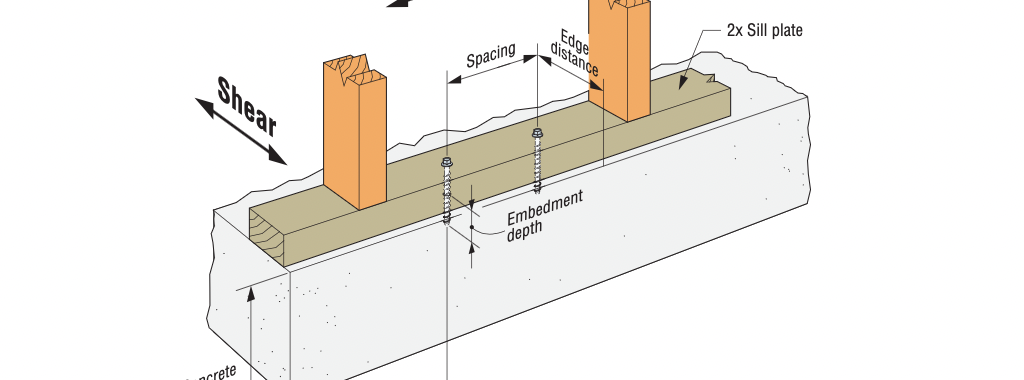In the last few years, Simpson Strong-Tie has heard from a number of structural engineers expressing frustration with the lack of performance data for shallowly embedded, post-installed anchors (shallow anchors). Engineers of Record (EOR) have identified a common application for shallow anchors as those related to attachment of sill plates for structural and nonstructural wall-to-podium slab connections. One dilemma faced by the EORs originates in their desire to prevent damage to concrete podium slab reinforcement, especially where reinforcement is located close to the slab’s top surface to resist negative bending moments. EORs further indicate that shallow anchors are frequently needed for the following attachments: hanging MEP fixtures; attaching nonstructural components associated with tenant improvements; and anchoring light equipment.
Tag: shear
Designing Steel Roof Deck Attachment for Combined Tension and Shear
In last week’s post I made a reference to California’s golden sunshine. Californians may have to deal with wildfires, earthquakes, and wearing sunscreen year round, but we generally don’t have high wind to worry about. In a previous blog post, Roof Deck Design Considerations for High Wind Events, I discussed some of the general challenges in designing for wind uplift. This week, I wanted to get a little more specific and discuss the standards applicable to steel roof deck attachments.
Historically, procedures for design of structural connections that utilize fasteners recognize the importance of combined loading effects on structural performance. Whether bolts or screws are the connector choice, the metallic structure of steel alloys includes transverse slip planes of relatively low resistance. This results in yield criteria (function that defines the onset of yielding or fracture) that are often limited by load-deformation performance along transverse planes.
Top 3 Roof Deck Design Considerations for High Wind Events
Was it JFK who said, “The time to repair the roof is when the sun is shining?” He was likely using the roof as an analogy for the economy, but I take things literally and wanted to talk about roofs. The time to think about the design of your roof and its function in a high wind event like a hurricane or tornado is right now.

During a high wind event, a roof deck is expected to perform many functions. It should prevent water intrusion from rain, withstand impacts and protect those inside from hail. It also needs to act as a diaphragm – transferring lateral loads to shear walls and resisting the vacuum effects of wind uplift forces.Continue Reading

